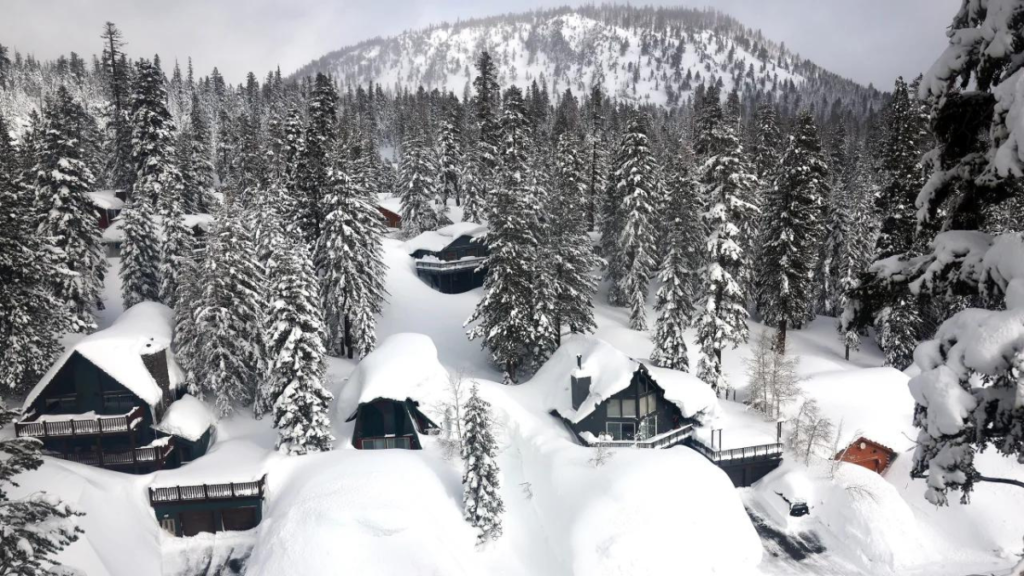Climate scientists have reported a global decline in snowfall, attributed to human-caused climate change. This shift poses a threat to global ecosystems, water supplies, and agriculture. The relationship between global warming and snowfall is complex, with short-term fluctuations leading to extreme winter storms and increased snowfall in certain regions. The long-term trend suggests a warmer world where precipitation is more likely to fall as rain than snow. A 2.7% decline in annual global snowfall since 1973 is particularly pronounced in the western United States, posing a significant threat to water supplies. Snowpack, a vital natural reservoir, supplies over 50% of the water in the arid West. A 2017 study predicts a more than one-third decline in western U.S. snowpack levels by 2100 under a high planet-warming pollution scenario. Understanding the implications of declining snowfall on global water supply is complex, and ongoing research aims to identify solutions and guide regions heavily reliant on snowmelt runoff toward a sustainable and resilient future.
The Warming World and Snowfall Dynamics
The relationship between global warming and snowfall is complex. While short-term fluctuations may lead to extreme winter storms and increased snowfall in certain regions, the long-term trend points toward a warmer world where precipitation is more likely to fall as rain than snow. Brian Brettschneider, a climate scientist with the National Weather Service, warns that as global temperatures rise, the laws of thermodynamics dictate a transition from snow to rain.
Justin Mankin, a climate scientist and associate professor at Dartmouth College, adds nuance to this narrative, highlighting a tipping point where snowfall losses accelerate once a certain temperature threshold is crossed.
Current Trends and Statistics
An analysis by Brettschneider reveals a 2.7% decline in annual global snowfall since 1973, with the most notable reductions occurring in the Northern Hemisphere’s mid-latitudes. This area, encompassing the middle region north of the tropics and south of the Arctic, is where a significant portion of the world’s population resides.
The decline in snowfall is particularly pronounced in the western United States, posing a substantial threat to water supplies. Snowpack, a vital natural reservoir storing water during winter and releasing it through snowmelt during dry periods, supplies over 50% of the water in the arid West.
Impact on Water Supplies and Agriculture
Jessica Lundquist, an environmental engineering professor at the University of Washington, emphasizes the critical role of snowpack in water supply, especially in regions experiencing extreme precipitation cycles, such as the Mediterranean climate found in California. The decline in snowfall jeopardizes ecosystems, agriculture, and urban areas reliant on snowmelt runoff during dry seasons.
A 2017 study predicts a more than one-third decline in western U.S. snowpack levels by 2100 under a high planet-warming pollution scenario, exacerbating water scarcity issues in the region.
Changing Precipitation Patterns
The maps provided by NOAA’s analysis illustrate a surprising increase in snowfall in the Northeastern United States. Brettschneider clarifies that this positive trend may mask a more complex reality. While total snowfall increases, the number of days with snowfall decreases, potentially indicating more extreme snowfall events aligned with climate change predictions.
Mankin explains that the likelihood of snowfall extremes may rise with global warming due to the enhanced ability of a warmer atmosphere to act as a reservoir for moisture. This countervailing response could result in increased snowfall extremes alongside global warming.
Challenges and Solutions
Understanding the implications of declining snowfall on global water supply is intricate. Mankin stresses the importance of assessing water content in snow rather than solely focusing on the amount of snow. The challenge is not insurmountable, but it requires a nuanced approach to water management.
Mankin’s 2015 study identifies 2 billion people at risk of significant water shortages due to declining snowfall, particularly in regions like South Asia, the Mediterranean, and North Africa. However, he acknowledges ongoing research to better comprehend the intricate relationship between snow and water supplies at a hyperlocal scale.
Conclusion
As snowfall continues to decrease globally, the consequences for water supplies, agriculture, and ecosystems become increasingly apparent. The shift from snow to rain, influenced by human-induced climate change, necessitates adaptive water management strategies. While challenges loom large, ongoing research aims to identify solutions and guide regions heavily reliant on snowmelt runoff toward a sustainable and resilient future. The evolving climate demands a departure from historical norms in infrastructure and management practices, emphasizing the importance of proactive adaptation in the face of a changing climate.







